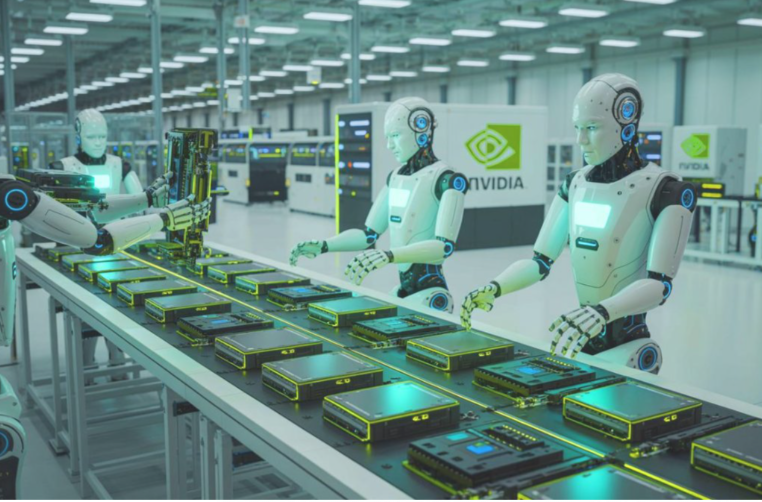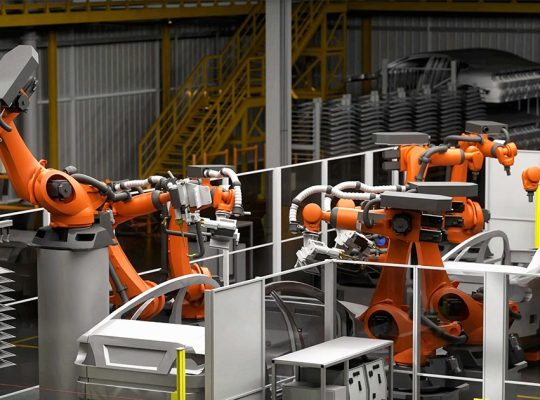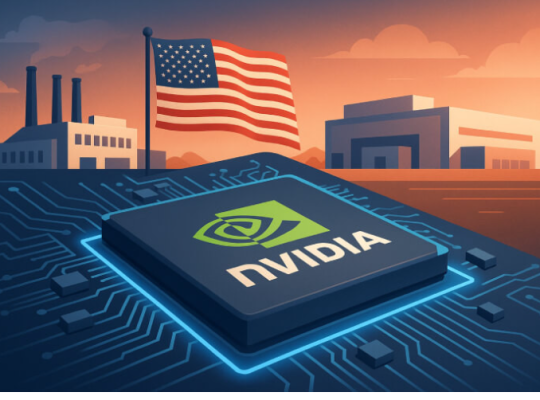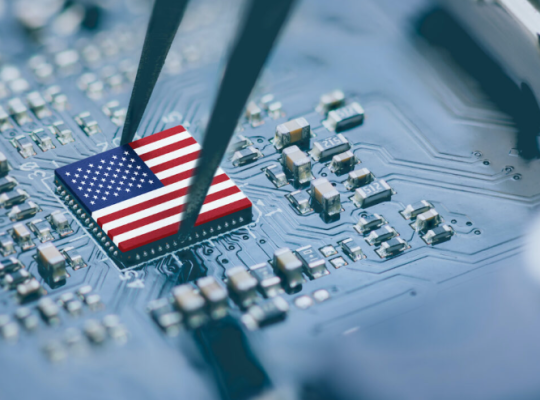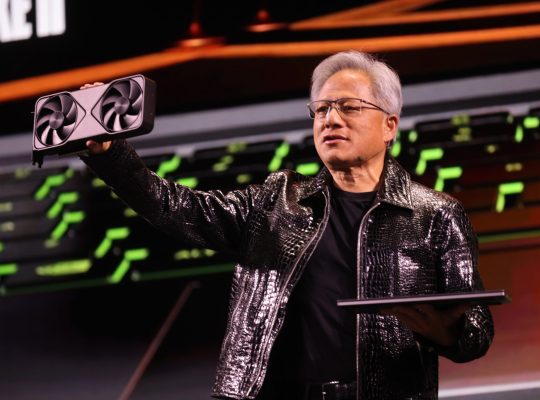Nvidia, while a fabless semiconductor company (meaning they design chips but don’t manufacture them in their own foundries), is making a significant push to increase the American footprint in its overall chip production and supply chain. This is driven by a confluence of factors, including geopolitical tensions, the desire for supply chain resilience, and government incentives.
Here’s a breakdown of the future of Nvidia’s chip production in America:
1. Strategic Shift Towards “Friend-Shoring” and Diversification:
Reducing Reliance on Taiwan: Historically, Nvidia has relied heavily on Taiwan Semiconductor Manufacturing Company (TSMC) for the most advanced chip fabrication. While TSMC remains a critical partner, geopolitical tensions, particularly regarding Taiwan’s relationship with mainland China, have prompted a strategic push to diversify production geographically.
Building a Domestic Ecosystem: Nvidia’s goal isn’t just about having chips made in the U.S., but about fostering a more integrated domestic semiconductor ecosystem. This involves collaborating with various partners across the supply chain.
2. Major Investments and Collaborations:
Billions in US AI Infrastructure: Nvidia has announced plans to invest significant capital—potentially hundreds of billions of dollars over the next four years—into building AI chip manufacturing infrastructure within the United States. This marks their first domestic production move.
Partnerships with Foundries and Packaging Firms:
TSMC’s Arizona Fabs: A cornerstone of Nvidia’s U.S. strategy is TSMC’s multi-billion dollar investment in new fabrication plants (fabs) in Arizona. TSMC has already begun pilot production of Nvidia’s Blackwell chips there, with volume production expected to ramp up in late 2025 and a second, more advanced fab (3nm/2nm) slated for 2028.
Advanced Packaging and Testing: Companies like Amkor and SPIL will handle the crucial advanced packaging and testing of these chips in the U.S., ensuring a more complete domestic supply chain for high-performance AI chips.
Supercomputer Manufacturing: Foxconn and Wistron are establishing supercomputer assembly plants in Houston and Dallas, respectively. This means that not only are the individual chips being made and packaged in the U.S., but the complex AI supercomputers that house them are also being assembled domestically.
3. Geopolitical Drivers and Government Support:
Supply Chain Resilience: The COVID-19 pandemic highlighted vulnerabilities in global supply chains. A domestic manufacturing base reduces the risk of disruptions from natural disasters, geopolitical conflicts, or trade disputes.
National Security and Tech Supremacy: The U.S. government views advanced semiconductor manufacturing as a matter of national security and a key component of maintaining technological leadership, especially in AI. Policies like theCHIPS and Science Act provide significant subsidies and tax breaks to incentivize companies like TSMC (and indirectly, their customers like Nvidia) to build fabs in the U.S.
Export Controls: U.S. export controls on advanced AI chips to China have directly impacted Nvidia’s business. While Nvidia has adapted by creating downgraded chips for the Chinese market and navigating complex trade talks (as seen with the H20 chip sales reversal linked to rare earth deals), the drive for domestic production helps the U.S. maintain a degree of control over the most cutting-edge technology.
“Trump Effect”: Recent U.S. administrations, including the current and former, have strongly pushed for reshoring manufacturing, particularly in critical sectors like semiconductors.
4. Challenges and Considerations:
High Production Costs: Manufacturing semiconductors in the U.S. is significantly more expensive than in Asia due to higher labor costs, energy prices, and regulatory environments. This can impact profitability, though government incentives aim to offset some of this.
Talent Shortage: The U.S. semiconductor industry faces a shortage of skilled engineers, technicians, and researchers. Attracting and training a sufficient workforce for these new fabs and related facilities is a major challenge. Nvidia is expected to partner with universities and technical institutes to address this.
Lead Times and Complexity: Building and equipping advanced fabs is an incredibly capital-intensive and time-consuming process, often taking years.
Technological Leadership: While the U.S. is building advanced fabs, Taiwan (TSMC) and South Korea (Samsung) still hold a lead in the very latest process technologies. The goal is to catch up and eventually surpass them domestically.
Global Competition: Despite U.S. efforts, countries like China are also heavily investing in their domestic chip capabilities (e.g., Huawei Ascend, DeepSeek). Nvidia will continue to face competition globally.
5. Future Outlook:
Increased Domestic Footprint: Nvidia’s U.S. chip production will undoubtedly increase, though it won’t entirely replace their reliance on international partners. A diversified, resilient global supply chain will remain key.
Advanced Packaging: Expect significant investment and innovation in advanced packaging technologies in the U.S., as this is crucial for integrating complex chips like Nvidia’s GPUs.
AI-Driven Manufacturing: Nvidia is leveraging its own AI technologies (like Omniverse for digital twins and Isaac GR00T for robotics) to optimize its manufacturing processes, potentially leading to highly automated and efficient fabs in the U.S.
Blueprint for “Sovereign AI”: The U.S. model of domestic AI chip production could serve as a blueprint for other nations seeking to build their own “sovereign AI” capabilities, reducing reliance on external sources for critical technology.
In conclusion, the future of Nvidia’s chip production in America is characterized by a strategic, multi-faceted push to localize significant portions of its supply chain for advanced AI chips and systems. While challenges remain, the combination of geopolitical imperatives, economic incentives, and technological advancements points towards a more robust and self-sufficient U.S. semiconductor ecosystem, with Nvidia at its forefront.






